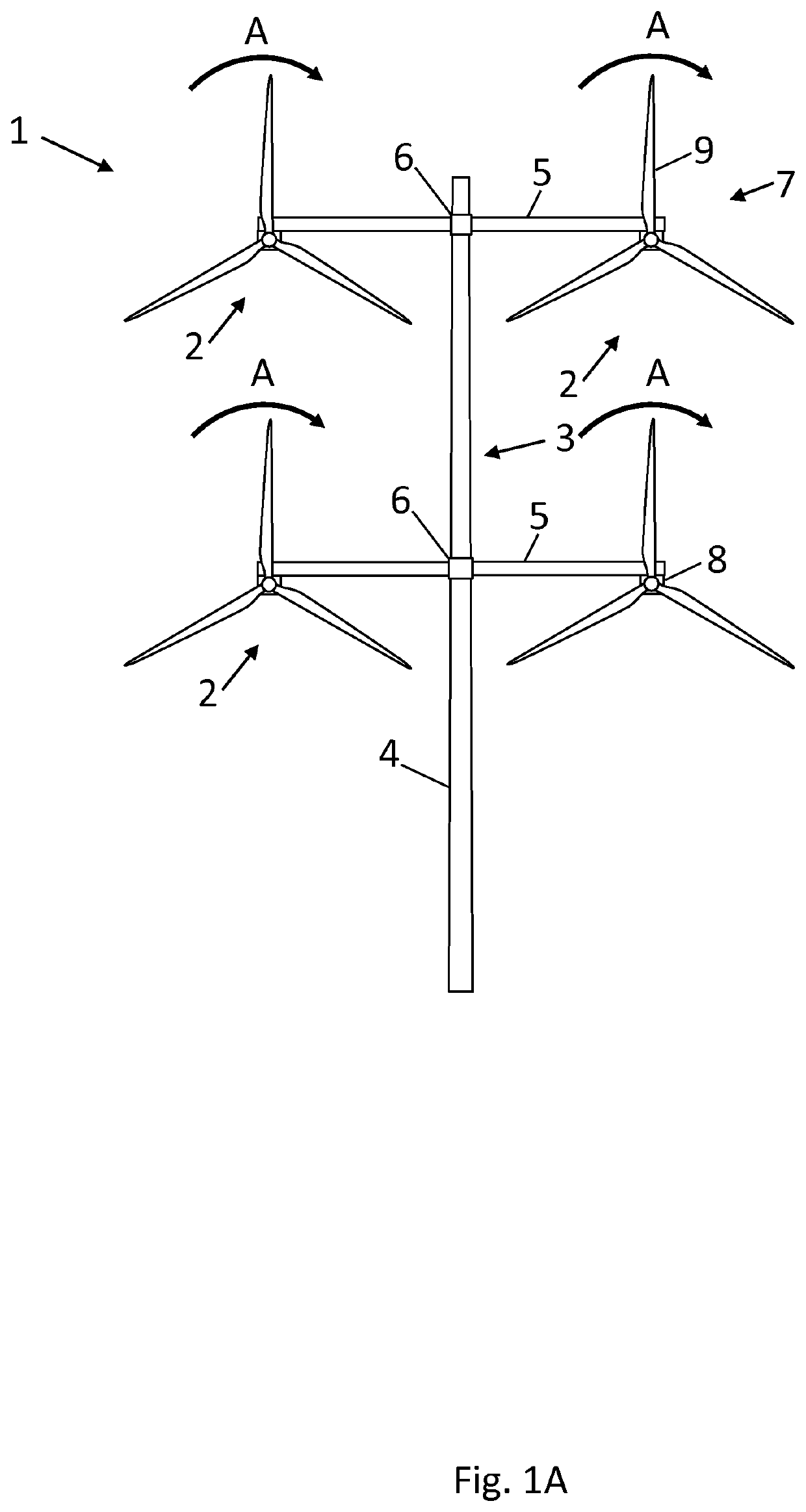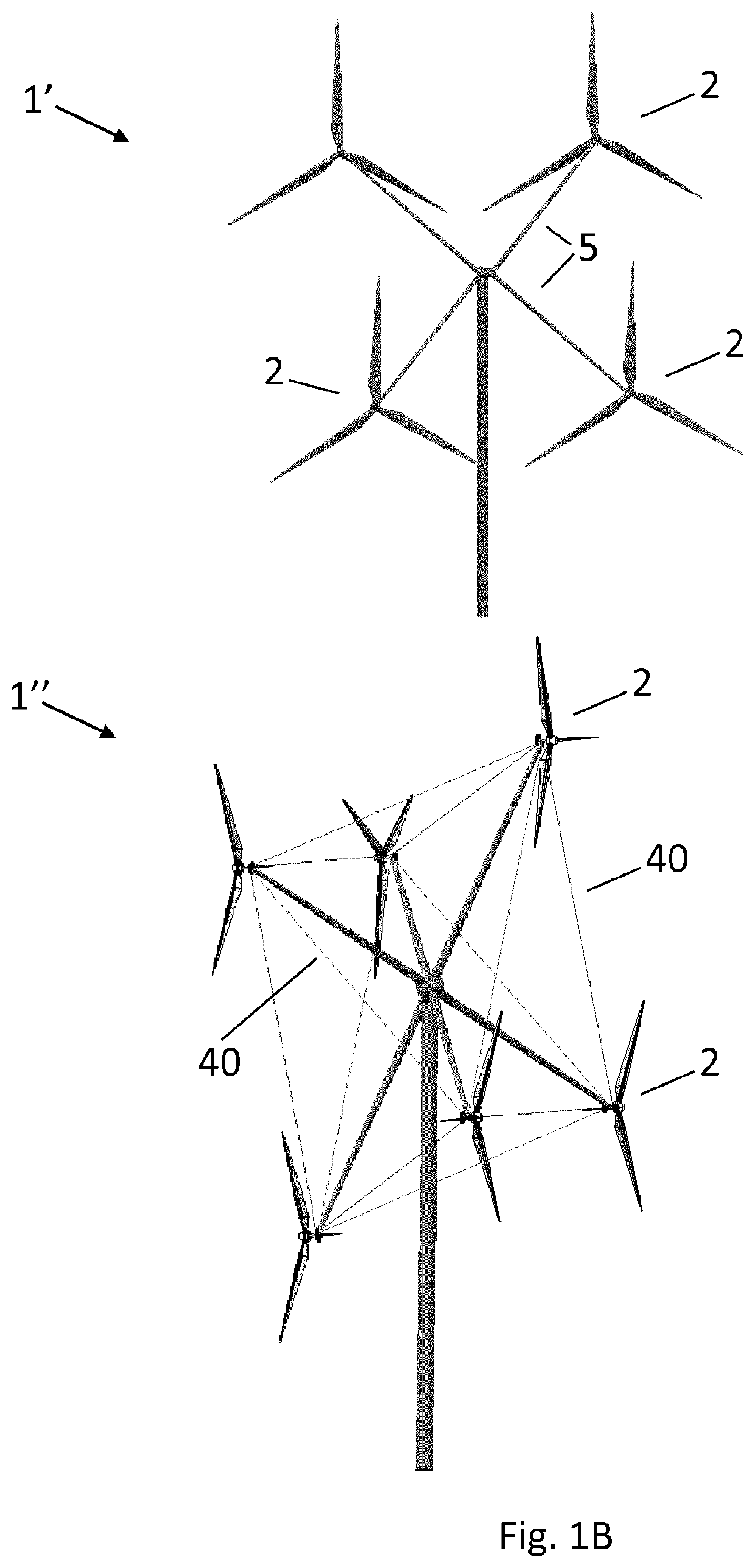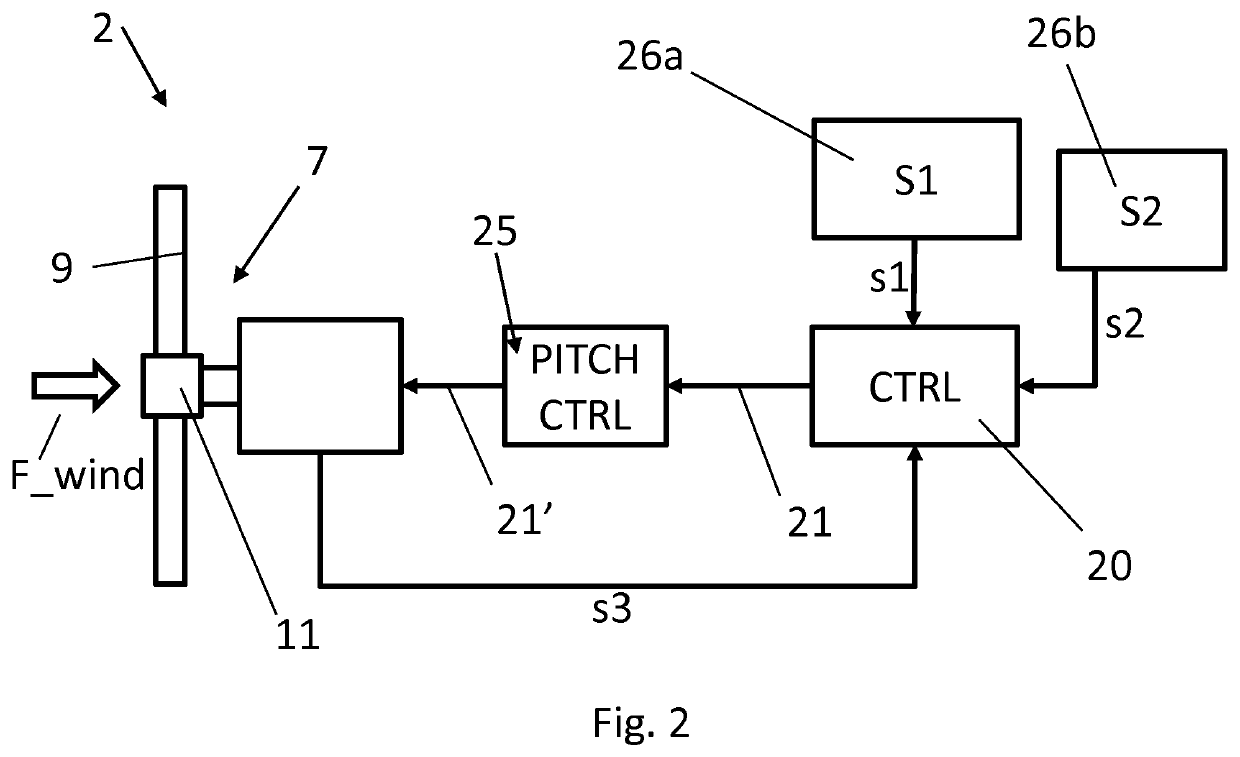Wind turbine system with improved stability during shutdown
a wind turbine and stability technology, applied in the direction of wind motors, wind motor control, motors, etc., can solve the problems of mechanical stability being more difficult to handle, a barrier to any significant commercial scale implementation in the wind turbine industry, and problems normally experienced on a single rotor wind turbine during shutdown, so as to reduce or mitigate the amplitude of movement in an efficient and well-controlled manner
- Summary
- Abstract
- Description
- Claims
- Application Information
AI Technical Summary
Benefits of technology
Problems solved by technology
Method used
Image
Examples
Embodiment Construction
[0065]The present invention will now be explained in further details. While the invention is susceptible to various modifications and alternative forms, specific embodiments have been disclosed by way of examples. It should be understood, however, that the invention is not intended to be limited to the particular forms disclosed. Rather, the invention is to cover all modifications, equivalents, and alternatives falling within the spirit and scope of the invention as defined by the appended claims.
[0066]FIG. 1A depicts a wind turbine system 1, wherein the wind turbine system is comprising:[0067]a support structure 3 including a tower 4 and arms 5 mounted to the tower 4 at junctions 6,[0068]a plurality of wind turbine modules 2 mounted to the support structure 3 wherein each of the plurality of wind turbine modules comprises a rotor 7 with blades 9.
[0069]The wind turbine system further comprises a control system 20 as shown in FIG. 2 as described further below. The control system 20 i...
PUM
 Login to View More
Login to View More Abstract
Description
Claims
Application Information
 Login to View More
Login to View More - R&D
- Intellectual Property
- Life Sciences
- Materials
- Tech Scout
- Unparalleled Data Quality
- Higher Quality Content
- 60% Fewer Hallucinations
Browse by: Latest US Patents, China's latest patents, Technical Efficacy Thesaurus, Application Domain, Technology Topic, Popular Technical Reports.
© 2025 PatSnap. All rights reserved.Legal|Privacy policy|Modern Slavery Act Transparency Statement|Sitemap|About US| Contact US: help@patsnap.com



